#fluted wood panels
Explore tagged Tumblr posts
Text
Elevate your interiors with premium fluted panels from Natural Veneers. Designed for modern aesthetics, these stylish veneer based fluted panels add depth and elegance to walls and spaces. Explore our fluted panels collection today! Inquire now for more details.
0 notes
Text
Zen Gardens Carved Wood Doors of Krishna & Ganesha
Zen Gardens: A Landscape of Calm and Reflection Originating in Japanese culture, Zen gardens are designed to evoke a miniature landscape of peace and tranquility. These thoughtfully composed gardens, typically featuring rocks, sand, and selectively placed plants, invite moments of contemplation and meditation. Shop Vintage Carved door Panels At MOGULINTERIOR. Once primarily found in traditional…
#Antique-inspired krishna Wall Décor#Artistic Barn Door Design#Bohemian Home Décor#Custom Barn Door Décor#custom doors#Divine krishna Wall Panel#door panel#fluting Krishna#Handcrafted Wood Wall Art#Hindu Deity Wall Art#indian door#Interior Design#krishna carving#krishna sculpture#sliding door#Spiritual Home Accent#temple doors#vintage carved doors#Vintage krishna Panel#Vintage Wood Carving#Wall Sculpture#yoga studio art
0 notes
Video
youtube
WPC Wood Veneer Wall Panels Fluted Wall Panel - Slat Wall Cladding Boar...
0 notes
Text
Ventura International - Your Ultimate Destination for Premium Wall Solutions in Delhi

Looking to enhance the aesthetics of your living or working space in Delhi with top-notch wall solutions? Look no further than Ventura International is your one-stop-shop for an extensive range of premium wall panels and laminates. We take pride in offering an exquisite collection of products that cater to various architectural and interior design needs. With a focus on quality, durability, and innovation, Ventura International is your go-to destination for all your wall embellishment requirements.
Architectural Laminates || Wood Veneers in Delhi/NCR
For those who appreciate the natural beauty of wood, our selection of architectural laminates and wood veneers in Delhi/NCR is sure to impress. These elegant materials bring warmth and character to any space, transforming ordinary walls into breathtaking focal points. Whether it's an office, home, or commercial establishment, our wood veneers and laminates will add a touch of sophistication to your interiors.
WPC Cladding in Delhi || Exterior Wood Cladding
Create stunning facades and outdoor spaces with our WPC cladding options. Our WPC cladding in Delhi offers a perfect blend of natural wood aesthetics and modern technology, ensuring unmatched durability and resistance to the elements. Give your building's exterior a fresh, contemporary look with our top-grade exterior wood cladding solutions.
Leather Wall Panels || 3D Wall Panels
For those seeking luxurious and eye-catching wall coverings, our leather wall panels and 3D wall panels are an excellent choice. These innovative and versatile solutions add texture and dimension to your walls, creating a captivating environment that leaves a lasting impression on your guests or clients.
Wooden Panels for Wall in Delhi
Our collection of wooden panels for walls in Delhi brings the rustic charm of wood into your living spaces. Crafted with precision and available in various styles and finishes, these wooden panels elevate the ambiance of any room, be it residential or commercial.
Buy Wall Panels || Decorative Veneer Sheets
At Ventura International, we aim to make your wall enhancement journey hassle-free. With just a few clicks on our website, you can easily browse and buy a wide range of wall panels and decorative veneer sheets. Elevate your space's interior with our premium products delivered right to your doorstep.
Fluted Wooden Panels || Decorative Boards
Create a unique and contemporary design with our fluted wooden panels and decorative boards. These textured surfaces add a sense of depth and elegance, making them an ideal choice for modern interiors and architectural projects.
Laminate Wall Panels || Charcoal Wall Panels
Discover an exquisite range of laminate wall panels and charcoal wall panels, blending aesthetics with functionality. Our offerings ensure a perfect balance between style and endurance, perfect for spaces that require both sophistication and robustness.
PVC Fluted Panels || Polystyrene Fluted Panels
For cost-effective yet stylish wall solutions, explore our collection of PVC fluted panels and polystyrene fluted panels. These lightweight and easy-to-install panels are a practical choice without compromising on design possibilities.
Decorative Interior Wall Paneling || Textured Laminates
Bring a touch of creativity to your interiors with our decorative interior wall paneling and textured laminates. These products open up endless possibilities for expressing your unique style and infusing life into your walls.
Don't wait any longer! Visit https://www.venturaindia.com/ now to explore our extensive collection of wall panels, laminates, and veneers, and elevate your interior and exterior spaces in Delhi with Ventura International's premium wall solutions.
#Planks For Wall In Delhi#Architectural Laminates#Wood Veneers In Delhincr#Wpc Cladding In Delhi#Leather Wall Panels#Decorative Veneers In Delhi#3d Wall Panels#Wooden Panels For Wall In Delhi#Leather Wall Panels In Delhi#Wpc Cladding#Veneers For Wall#Exterior Wood Cladding#Veneer Wall Panels#Fluted Wooden Panels#Fluted Panels#Wooden Cladding#Buy Wall Panels#Laminates In Delhi#Decorative Veneer Sheets#Wooden Cladding For Exterior Walls#Decorative Boards#Wall Laminates#Laminates For Wall#3d Walls Tiles#Laminates For Wall Covering#Charcoal Fluted Panels#Indoor Wall Panels#Laminate Wall Panels#Charcoal Panels#Charcoal Wall Panels
0 notes
Photo

Traditional Home Office - Home Office Inspiration for a mid-sized timeless freestanding desk carpeted study room remodel
0 notes
Text
Fantasy Guide to Interiors
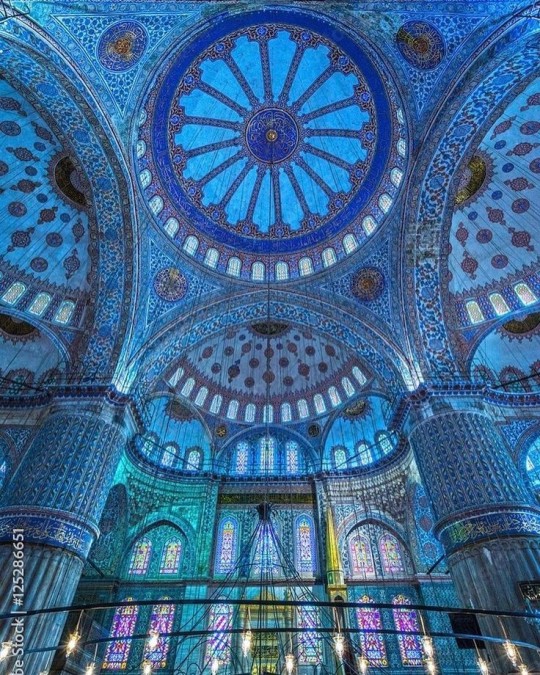
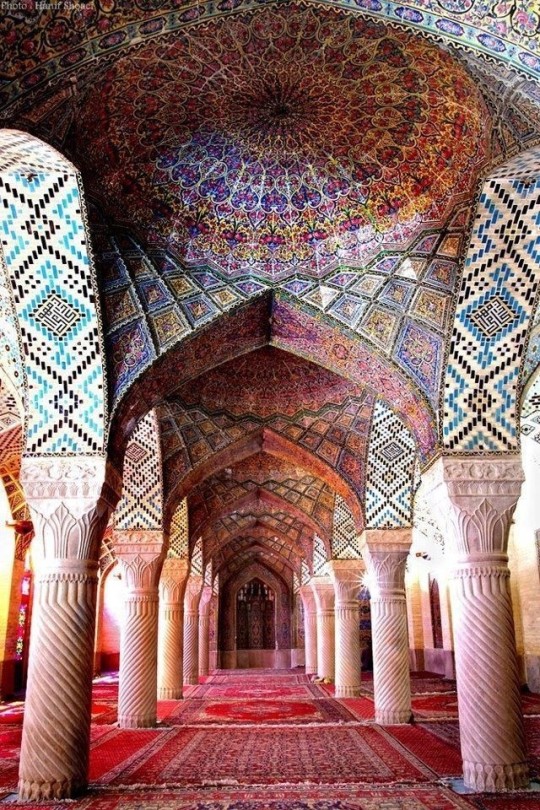
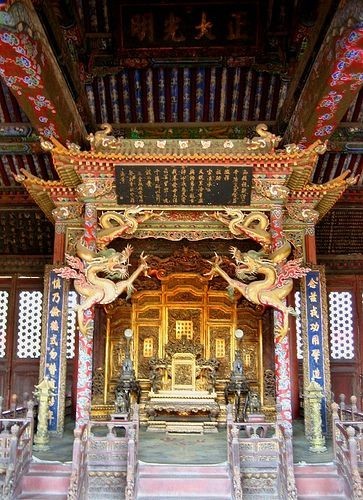
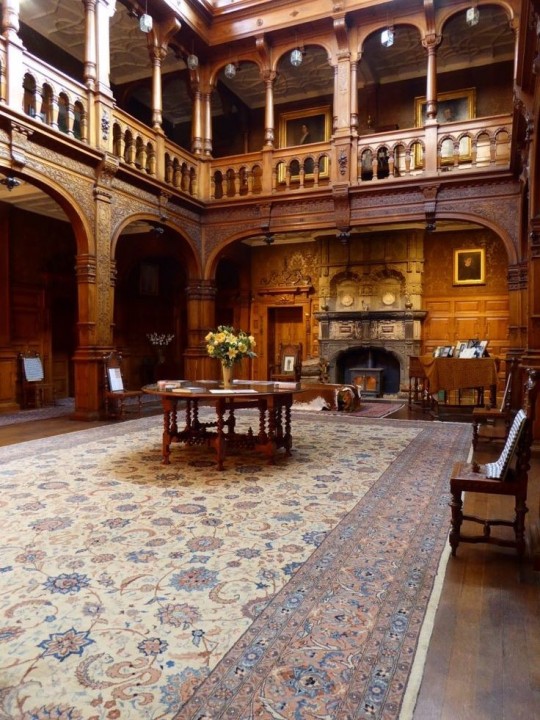
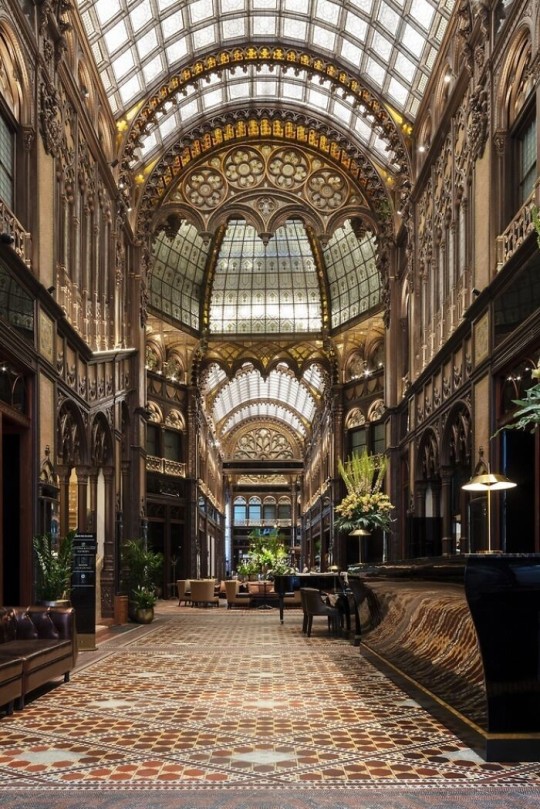
As a followup to the very popular post on architecture, I decided to add onto it by exploring the interior of each movement and the different design techniques and tastes of each era. This post at be helpful for historical fiction, fantasy or just a long read when you're bored.
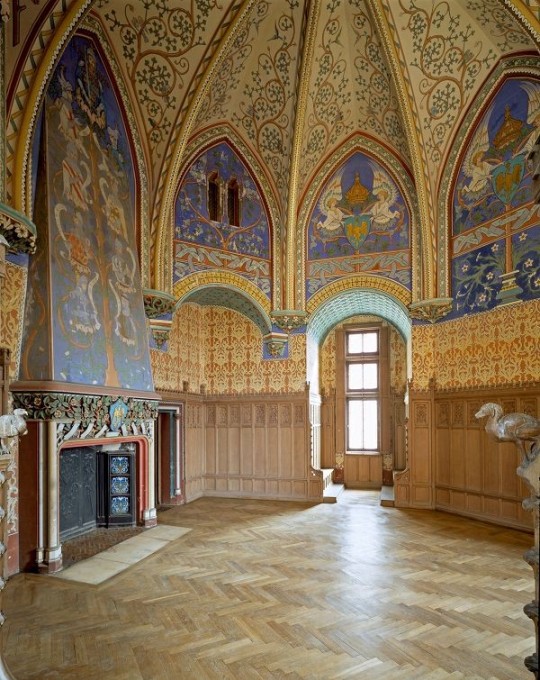
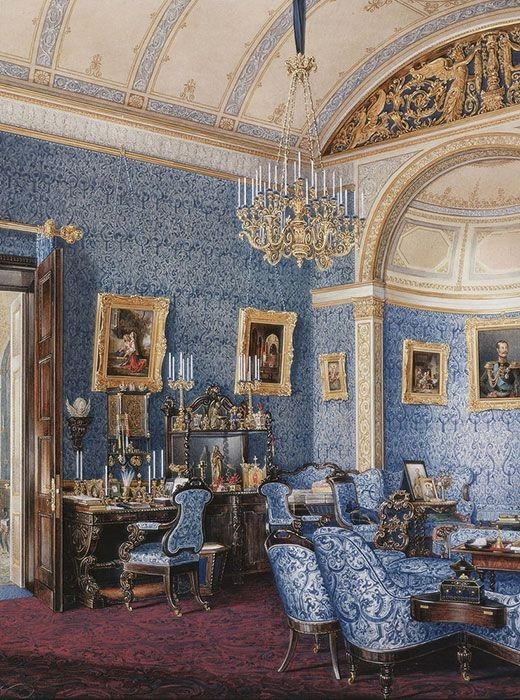
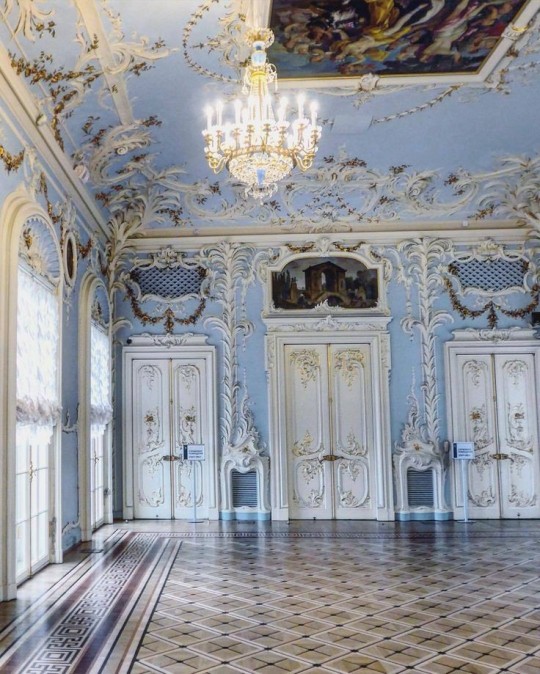
Interior Design Terms
Reeding and fluting: Fluting is a technique that consists a continuous pattern of concave grooves in a flat surface across a surface. Reeding is it's opposite.
Embossing: stamping, carving or moulding a symbol to make it stand out on a surface.
Paneling: Panels of carved wood or fabric a fixed to a wall in a continuous pattern.
Gilding: the use of gold to highlight features.
Glazed Tile: Ceramic or porcelain tiles coated with liquid coloured glass or enamel.
Column: A column is a pillar of stone or wood built to support a ceiling. We will see more of columns later on.
Bay Window: The Bay Window is a window projecting outward from a building.
Frescos: A design element of painting images upon wet plaster.
Mosaic: Mosaics are a design element that involves using pieces of coloured glass and fitted them together upon the floor or wall to form images.
Mouldings: ornate strips of carved wood along the top of a wall.
Wainscoting: paneling along the lower portion of a wall.
Chinoiserie: A European take on East Asian art. Usually seen in wallpaper.
Clerestory: A series of eye-level windows.
Sconces: A light fixture supported on a wall.
Niche: A sunken area within a wall.
Monochromatic: Focusing on a single colour within a scheme.
Ceiling rose: A moulding fashioned on the ceiling in the shape of a rose usually supporting a light fixture.
Baluster: the vertical bars of a railing.
Façade: front portion of a building
Lintel: Top of a door or window.
Portico: a covered structure over a door supported by columns
Eaves: the part of the roof overhanging from the building
Skirting: border around lower length of a wall
Ancient Greece
Houses were made of either sun-dried clay bricks or stone which were painted when they dried. Ground floors were decorated with coloured stones and tiles called Mosaics. Upper level floors were made from wood. Homes were furnished with tapestries and furniture, and in grand homes statues and grand altars would be found. Furniture was very skillfully crafted in Ancient Greece, much attention was paid to the carving and decoration of such things. Of course, Ancient Greece is ancient so I won't be going through all the movements but I will talk a little about columns.
Doric: Doric is the oldest of the orders and some argue it is the simplest. The columns of this style are set close together, without bases and carved with concave curves called flutes. The capitals (the top of the column) are plain often built with a curve at the base called an echinus and are topped by a square at the apex called an abacus. The entablature is marked by frieze of vertical channels/triglyphs. In between the channels would be detail of carved marble. The Parthenon in Athens is your best example of Doric architecture.
Ionic: The Ionic style was used for smaller buildings and the interiors. The columns had twin volutes, scroll-like designs on its capital. Between these scrolls, there was a carved curve known as an egg and in this style the entablature is much narrower and the frieze is thick with carvings. The example of Ionic Architecture is the Temple to Athena Nike at the Athens Acropolis.
Corinthian: The Corinthian style has some similarities with the Ionic order, the bases, entablature and columns almost the same but the capital is more ornate its base, column, and entablature, but its capital is far more ornate, commonly carved with depictions of acanthus leaves. The style was more slender than the others on this list, used less for bearing weight but more for decoration. Corinthian style can be found along the top levels of the Colosseum in Rome.
Tuscan: The Tuscan order shares much with the Doric order, but the columns are un-fluted and smooth. The entablature is far simpler, formed without triglyphs or guttae. The columns are capped with round capitals.
Composite: This style is mixed. It features the volutes of the Ionic order and the capitals of the Corinthian order. The volutes are larger in these columns and often more ornate. The column's capital is rather plain. for the capital, with no consistent differences to that above or below the capital.
Ancient Rome
Rome is well known for its outward architectural styles. However the Romans did know how to add that rizz to the interior. Ceilings were either vaulted or made from exploded beams that could be painted. The Romans were big into design. Moasics were a common interior sight, the use of little pieces of coloured glass or stone to create a larger image. Frescoes were used to add colour to the home, depicting mythical figures and beasts and also different textures such as stonework or brick. The Romans loved their furniture. Dining tables were low and the Romans ate on couches. Weaving was a popular pastime so there would be tapestries and wall hangings in the house. Rich households could even afford to import fine rugs from across the Empire. Glass was also a feature in Roman interior but windows were usually not paned as large panes were hard to make. Doors were usually treated with panels that were carved or in lain with bronze.
Ancient Egypt
Egypt was one of the first great civilisations, known for its immense and grand structures. Wealthy Egyptians had grand homes. The walls were painted or plastered usually with bright colours and hues. The Egyptians are cool because they mapped out their buildings in such a way to adhere to astrological movements meaning on special days if the calendar the temple or monuments were in the right place always. The columns of Egyptian where thicker, more bulbous and often had capitals shaped like bundles of papyrus reeds. Woven mats and tapestries were popular decor. Motifs from the river such as palms, papyrus and reeds were popular symbols used.
Ancient Africa
African Architecture is a very mixed bag and more structurally different and impressive than Hollywood would have you believe. Far beyond the common depictions of primitive buildings, the African nations were among the giants of their time in architecture, no style quite the same as the last but just as breathtaking.
Rwandan Architecture: The Rwandans commonly built of hardened clay with thatched roofs of dried grass or reeds. Mats of woven reeds carpeted the floors of royal abodes. These residences folded about a large public area known as a karubanda and were often so large that they became almost like a maze, connecting different chambers/huts of all kinds of uses be they residential or for other purposes.
Ashanti Architecture: The Ashanti style can be found in present day Ghana. The style incorporates walls of plaster formed of mud and designed with bright paint and buildings with a courtyard at the heart, not unlike another examples on this post. The Ashanti also formed their buildings of the favourite method of wattle and daub.
Nubian Architecture: Nubia, in modern day Ethiopia, was home to the Nubians who were one of the world's most impressive architects at the beginning of the architecture world and probably would be more talked about if it weren't for the Egyptians building monuments only up the road. The Nubians were famous for building the speos, tall tower-like spires carved of stone. The Nubians used a variety of materials and skills to build, for example wattle and daub and mudbrick. The Kingdom of Kush, the people who took over the Nubian Empire was a fan of Egyptian works even if they didn't like them very much. The Kushites began building pyramid-like structures such at the sight of Gebel Barkal
Japanese Interiors
Japenese interior design rests upon 7 principles. Kanso (簡素)- Simplicity, Fukinsei (不均整)- Asymmetry, Shizen (自然)- Natural, Shibumi (渋味) – Simple beauty, Yugen (幽玄)- subtle grace, Datsuzoku (脱俗) – freedom from habitual behaviour, Seijaku (静寂)- tranquillity.
Common features of Japanese Interior Design:
Shoji walls: these are the screens you think of when you think of the traditional Japanese homes. They are made of wooden frames, rice paper and used to partition
Tatami: Tatami mats are used within Japanese households to blanket the floors. They were made of rice straw and rush straw, laid down to cushion the floor.
Genkan: The Genkan was a sunken space between the front door and the rest of the house. This area is meant to separate the home from the outside and is where shoes are discarded before entering.
Japanese furniture: often lowest, close to the ground. These include tables and chairs but often tanked are replaced by zabuton, large cushions. Furniture is usually carved of wood in a minimalist design.
Nature: As both the Shinto and Buddhist beliefs are great influences upon architecture, there is a strong presence of nature with the architecture. Wood is used for this reason and natural light is prevalent with in the home. The orientation is meant to reflect the best view of the world.
Islamic World Interior
The Islamic world has one of the most beautiful and impressive interior design styles across the world. Colour and detail are absolute staples in the movement. Windows are usually not paned with glass but covered in ornate lattices known as jali. The jali give ventilation, light and privacy to the home. Islamic Interiors are ornate and colourful, using coloured ceramic tiles. The upper parts of walls and ceilings are usually flat decorated with arabesques (foliate ornamentation), while the lower wall areas were usually tiled. Features such as honeycombed ceilings, horseshoe arches, stalactite-fringed arches and stalactite vaults (Muqarnas) are prevalent among many famous Islamic buildings such as the Alhambra and the Blue Mosque.
Byzantine (330/395–1453 A. D)
The Byzantine Empire or Eastern Roman Empire was where eat met west, leading to a melting pot of different interior designs based on early Christian styles and Persian influences. Mosaics are probably what you think of when you think of the Byzantine Empire. Ivory was also a popular feature in the Interiors, with carved ivory or the use of it in inlay. The use of gold as a decorative feature usually by way of repoussé (decorating metals by hammering in the design from the backside of the metal). Fabrics from Persia, heavily embroidered and intricately woven along with silks from afar a field as China, would also be used to upholster furniture or be used as wall hangings. The Byzantines favoured natural light, usually from the use of copolas.
Indian Interiors
India is of course, the font of all intricate designs. India's history is sectioned into many eras but we will focus on a few to give you an idea of prevalent techniques and tastes.
The Gupta Empire (320 – 650 CE): The Gupta era was a time of stone carving. As impressive as the outside of these buildings are, the Interiors are just as amazing. Gupta era buildings featured many details such as ogee (circular or horseshoe arch), gavaksha/chandrashala (the motif centred these arches), ashlar masonry (built of squared stone blocks) with ceilings of plain, flat slabs of stone.
Delhi Sultanate (1206–1526): Another period of beautifully carved stone. The Delhi sultanate had influence from the Islamic world, with heavy uses of mosaics, brackets, intricate mouldings, columns and and hypostyle halls.
Mughal Empire (1526–1857): Stonework was also important on the Mughal Empire. Intricately carved stonework was seen in the pillars, low relief panels depicting nature images and jalis (marble screens). Stonework was also decorated in a stye known as pietra dura/parchin kari with inscriptions and geometric designs using colored stones to create images. Tilework was also popular during this period. Moasic tiles were cut and fitted together to create larger patters while cuerda seca tiles were coloured tiles outlined with black.
Chinese Interiors
Common features of Chinese Interiors
Use of Colours: Colour in Chinese Interior is usually vibrant and bold. Red and Black are are traditional colours, meant to bring luck, happiness, power, knowledge and stability to the household.
Latticework: Lattices are a staple in Chinese interiors most often seen on shutters, screens, doors of cabinets snf even traditional beds.
Lacquer: Multiple coats of lacquer are applied to furniture or cabinets (now walls) and then carved. The skill is called Diaoqi (雕漆).
Decorative Screens: Screens are used to partition off part of a room. They are usually of carved wood, pained with very intricate murals.
Shrines: Spaces were reserved on the home to honour ancestors, usually consisting of an altar where offerings could be made.
Of course, Chinese Interiors are not all the same through the different eras. While some details and techniques were interchangeable through different dynasties, usually a dynasty had a notable style or deviation. These aren't all the dynasties of course but a few interesting examples.
Song Dynasty (960–1279): The Song Dynasty is known for its stonework. Sculpture was an important part of Song Dynasty interior. It was in this period than brick and stone work became the most used material. The Song Dynasty was also known for its very intricate attention to detail, paintings, and used tiles.
Ming Dynasty(1368–1644): Ceilings were adorned with cloisons usually featuring yellow reed work. The floors would be of flagstones usually of deep tones, mostly black. The Ming Dynasty favoured richly coloured silk hangings, tapestries and furnishings. Furniture was usually carved of darker woods, arrayed in a certain way to bring peace to the dwelling.
Han Dynasty (206 BC-220 AD): Interior walls were plastered and painted to show important figures and scenes. Lacquer, though it was discovered earlier, came into greater prominence with better skill in this era.
Tang Dynasty (618–907) : The colour palette is restrained, reserved. But the Tang dynasty is not without it's beauty. Earthenware reached it's peak in this era, many homes would display fine examples as well. The Tang dynasty is famous for its upturned eaves, the ceilings supported by timber columns mounted with metal or stone bases. Glazed tiles were popular in this era, either a fixed to the roof or decorating a screen wall.
Romanesque (6th -11th century/12th)
Romanesque Architecture is a span between the end of Roman Empire to the Gothic style. Taking inspiration from the Roman and Byzantine Empires, the Romanesque period incorporates many of the styles. The most common details are carved floral and foliage symbols with the stonework of the Romanesque buildings. Cable mouldings or twisted rope-like carvings would have framed doorways. As per the name, Romansque Interiors relied heavily on its love and admiration for Rome. The Romanesque style uses geometric shapes as statements using curves, circles snf arches. The colours would be clean and warm, focusing on minimal ornamentation.
Gothic Architecture (12th Century - 16th Century)
The Gothic style is what you think of when you think of old European cathedrals and probably one of the beautiful of the styles on this list and one of most recognisable. The Gothic style is a dramatic, opposing sight and one of the easiest to describe. Decoration in this era became more ornate, stonework began to sport carving and modelling in a way it did not before. The ceilings moved away from barreled vaults to quadripartite and sexpartite vaulting. Columns slimmed as other supportive structures were invented. Intricate stained glass windows began their popularity here. In Gothic structures, everything is very symmetrical and even.
Mediaeval (500 AD to 1500)
Interiors of mediaeval homes are not quite as drab as Hollywood likes to make out. Building materials may be hidden by plaster in rich homes, sometimes even painted. Floors were either dirt strewn with rushes or flagstones in larger homes. Stonework was popular, especially around fireplaces. Grand homes would be decorated with intricate woodwork, carved heraldic beasts and wall hangings of fine fabrics.
Renaissance (late 1300s-1600s)
The Renaissance was a period of great artistry and splendor. The revival of old styles injected symmetry and colour into the homes. Frescoes were back. Painted mouldings adorned the ceilings and walls. Furniture became more ornate, fixed with luxurious upholstery and fine carvings. Caryatids (pillars in the shape of women), grotesques, Roman and Greek images were used to spruce up the place. Floors began to become more intricate, with coloured stone and marble. Modelled stucco, sgraffiti arabesques (made by cutting lines through a layer of plaster or stucco to reveal an underlayer), and fine wall painting were used in brilliant combinations in the early part of the 16th century.
Tudor Interior (1485-1603)
The Tudor period is a starkly unique style within England and very recognisable. Windows were fixed with lattice work, usually casement. Stained glass was also in in this period, usually depicting figures and heraldic beasts. Rooms would be panelled with wood or plastered. Walls would be adorned with tapestries or embroidered hangings. Windows and furniture would be furnished with fine fabrics such as brocade. Floors would typically be of wood, sometimes strewn with rush matting mixed with fresh herbs and flowers to freshen the room.
Baroque (1600 to 1750)
The Baroque period was a time for splendor and for splashing the cash. The interior of a baroque room was usually intricate, usually of a light palette, featuring a very high ceiling heavy with detail. Furniture would choke the room, ornately carved and stitched with very high quality fabrics. The rooms would be full of art not limited to just paintings but also sculptures of marble or bronze, large intricate mirrors, moldings along the walls which may be heavily gilded, chandeliers and detailed paneling.
Victorian (1837-1901)
We think of the interiors of Victorian homes as dowdy and dark but that isn't true. The Victorians favoured tapestries, intricate rugs, decorated wallpaper, exquisitely furniture, and surprisingly, bright colour. Dyes were more widely available to people of all stations and the Victorians did not want for colour. Patterns and details were usually nature inspired, usually floral or vines. Walls could also be painted to mimic a building material such as wood or marble and most likely painted in rich tones. The Victorians were suckers for furniture, preferring them grandly carved with fine fabric usually embroidered or buttoned. And they did not believe in minimalism. If you could fit another piece of furniture in a room, it was going in there. Floors were almost eclusively wood laid with the previously mentioned rugs. But the Victorians did enjoy tiled floors but restricted them to entrances. The Victorians were quite in touch with their green thumbs so expect a lot of flowers and greenery inside. with various elaborately decorated patterned rugs. And remember, the Victorians loved to display as much wealth as they could. Every shelf, cabinet, case and ledge would be chocked full of ornaments and antiques.
Edwardian/The Gilded Age/Belle Epoque (1880s-1914)
This period (I've lumped them together for simplicity) began to move away from the deep tones and ornate patterns of the Victorian period. Colour became more neutral. Nature still had a place in design. Stained glass began to become popular, especially on lampshades and light fixtures. Embossing started to gain popularity and tile work began to expand from the entrance halls to other parts of the house. Furniture began to move away from dark wood, some families favouring breathable woods like wicker. The rooms would be less cluttered.
Art Deco (1920s-1930s)
The 1920s was a time of buzz and change. Gone were the refined tastes of the pre-war era and now the wow factor was in. Walls were smoother, buildings were sharper and more jagged, doorways and windows were decorated with reeding and fluting. Pastels were in, as was the heavy use of black and white, along with gold. Mirrors and glass were in, injecting light into rooms. Gold, silver, steel and chrome were used in furnishings and decor. Geometric shapes were a favourite design choice. Again, high quality and bold fabrics were used such as animal skins or colourful velvet. It was all a rejection of the Art Noveau movement, away from nature focusing on the man made.
Modernism (1930 - 1965)
Modernism came after the Art Deco movement. Fuss and feathers were out the door and now, practicality was in. Materials used are shown as they are, wood is not painted, metal is not coated. Bright colours were acceptable but neutral palettes were favoured. Interiors were open and favoured large windows. Furniture was practical, for use rather than the ornamentation, featuring plain details of any and geometric shapes. Away from Art Deco, everything is straight, linear and streamlined.
#This took forever#I'm very tired#But enjoy#I covered as much as I could find#Fantasy Guide to interiors#interior design#Architecture#writings#writing resources#Writing reference#Writing advice#Writer's research#writing research#Writer's rescources#Writing help#Mediaeval#Renaissance#Chinese Interiors#Japanese Interiors#Indian interiors#writing#writeblr#writing reference#writing advice#writer#spilled words#writers
3K notes
·
View notes
Photo

Enclosed Kitchen
#Inspiration for a mid-sized timeless l-shaped travertine floor enclosed kitchen remodel with an undermount sink#raised-panel cabinets#dark wood cabinets#granite countertops#beige backsplash#stone tile backsplash#stainless steel appliances and an island fluted#corbels & brackets#kitchen#arched raised panel#matching end panels
0 notes
Text
takes more than whiskey
trying to claw my way out of writers block one mini fic at a time. so please enjoy imogen hustling a guy at pool while laudna watches fondly.
inspired by "if she ever leaves me" by the highwomen
~900 words
~~~
The air hangs heavy with fried food and beer, and Laudna knows the scent will cling to her clothes when she leaves. She can feel the faux leather of the booth imprinting on her skirt. Her favored corner seat endows her with the perfect view of the bartop to the right, lined with mirrored shelves. A dozen patrons sit on high stools. An older woman, her hand on the knee of a gentleman who gazes at her like she’s the most beautiful thing he’s ever seen. A man in a dress shirt and slacks, a small bouquet resting on the counter before him. His foot taps a quick rhythm against the footrest. Familiar sights that alight in Laudna’s chest.
The walls breathe with memory. Aging photographs of patrons from years gone by are tacked to the dark wood paneling. A group of strangers ringing in the New Year, champagne flutes held aloft, arms slung around shoulders and across hips, and dated novelty sunglasses perched on foreheads. A bar regular lifting his bottle with an eyebrow raised at the camera, frozen in the moment before the perfect sip.
The pool tables clatter to the left, a shout drawing her attention to the group assembled around a triumphant figure smugly leaning on a cue stick. Someone passes her a rocks glass that she takes with a wink. Her hair is piled out of the way in an effortlessly messy bun, strands of pale purple framing a reddening freckled face. Her denim shirt is tied in a hasty knot at her waistline, tantalizingly unbuttoned over a white undershirt. When the woman sets her drink down and leans over the table to line up her next shot, Laudna has an exceptionally good view. As if the woman can sense her, she meets Laudna’s eye, winks, and sends two balls skittering across the table. Her aim is true, and she sinks both.
Her opponent, a tall man with sandy hair and a respectable cowboy hat, shakes his head as the woman takes another sip of her drink. Their match has caught the attention of the surrounding patrons, the rowdier of which have opted to form a rather boisterous heckling crew. The cowboy, to his credit, seems to be taking it good-naturedly, shrugging off playful jeers in favor of watching the woman aim her stick at the cue ball once again.
A sharp crack resounds, and the small crowd oohs. The woman must have missed. Gone too far right, perhaps, Laudna theorizes, with her lacking knowledge of the game. She ought to learn to play one day, she reckons, if she intends to keep coming here, especially if it earns her games with rather handsome young women. For now, Laudna is content to watch, sampling a flowery gin drink with a ridiculous name she’d paid far too much for.
The woman shrugs, a coy smirk playing across her lips as if to say, Your turn. She’d nearly cleared the table before the cowboy had a second shot.
The man says something to her that Laudna can’t make out over the tinny country music playing from the tableside speaker. Whatever it is, it causes the woman to laugh and raise her eyebrows. He pats her shoulder, and she steps back, allowing the man full access to the table. Amber liquid disappears from her glass in one swig. She reclines against mahogany-stained wood, cue stick propped against her thigh, searching.
She catches Laudna’s eye, and her head shakes minutely – Can you believe this guy?
Laudna averts her gaze, only moderately embarrassed at having been caught staring. The woman adjusts her stance and tilts her head, that coquettish smirk spreading once more. Look all you want, honey, Laudna imagines her crooning voice dripping with warmth.
Laudna, suddenly feeling quite flushed and trying to avoid nothing at all, certainly, brings her glass to her lips, which only worsens the heat in her cheeks.
Before she knows it, the woman is up again. The cowboy has set her up nicely for an easy shot at sending the eight-ball straight into a corner pocket. The woman bends over the table, rolls her neck, looks at her opponent, and takes the shot. The crowd offers hearty congratulations, poking fun at the loser. The woman sticks out a sportsmanlike hand, and the cowboy takes it with a grin. He leans in to say something, gesturing to the bar. The woman smiles kindly and politely declines, nodding toward Laudna’s little booth. The cowboy steps back, both hands raised in amiable surrender.
Sure strides carry the newly crowned winner to Laudna’s table, the heels of her brown leather boots thudding on sticky floors.
“Hey, honey.” She leans down for a kiss that Laudna happily grants her.
“Imogen, darling,” Laudna hums, a teasing note ringing in the words, “you really must go harder on the college boys one of these days. What if one of them thinks he has a shot?”
“Somebody’s gotta keep ‘em humble.”
“And you do it so elegantly.” Laudna smiles into their kiss.
“Enjoyed the show, did you?” Imogen’s sugared accent drawls over the syllables, melting Laudna at the knees. “Don’t think I didn’t see you lookin’.”
“For the price of this drink, I think I’m owed a little entertainment.”
“You’re the one who keeps orderin’ those fancy cocktails.” Imogen lifts her chin at the glass on the waterstained table. “What’s in this one?”
“Elderflower and gin.”
Her nose wrinkles. “Mm, I think I’ll stick with whiskey.” She kisses away what remains of the cocktail on Laudna’s lips. “You wanna get out of here?”
“Please.”
#idk it made me feel warm and fuzzy#largely unedited truly just trying to write more#link to the song in my pinned post#imodna#laudna#imogen temult#critical role#cr3#my fic#imodna fanfic#imodna fic#critical role fanfiction#fic#imogen x laudna
38 notes
·
View notes
Text

Rilski manastir (Rila monastery), raised balcony sitting area
Rila, Bulgaria
Painting of plant forms decorate the falsework capitals (bolsters) of the posts forming the gallery as well as the rounded perimeter of this projecting wooden balcony, located at the top level of a four-gallery section of the residential buildings. The balcony ceiling is formed of radiating woodwork, extending outward below the roof eaves. The complex convex fluting of the balcony edge can be seen in the ceiling, railing caps, undulating plaster and wood panelled surfaces. (photo 2000)
81 notes
·
View notes
Text
Top 5 Wood Veneer Trends for 2025

Discover the top 5 wood veneer trends for 2025! From sustainable designs to bold textures, explore how to elevate your interiors with the latest in veneer innovation.
#natural veneers#wood veneers#decorative veneers#colored veneers#interior design#fluted panels#Wood Veneer Trends 2025#Design Trend#Texture Veneer
0 notes
Text
Starter for @young-botanical-genius
Payton rotated the champagne flute between his index finger and thumb, watching the barely perceptible whirlpool form and then dissipate as it gained and lost momentum.
The American Museum of Natural History was a returning client, having signed a five year contract with Soleil the previous year to handle their annual Winter Fundraiser. Last December's banquet had exceeded expectations; their ROI had jumped exponentially from the previous year, and their donor acquisition rate had tripled.
That was the magic Soleil could work, according to Dahlia. A product was nothing without good a marketing team. With the right timing, the right backdrop, the right people, and the right words, you could sell glass as diamond or pyrite as gold, and the AMNH had at lot of all four stowed away in their archives.
And that was the thing: as far as his mountain of obligations went, the annual banquet was pleasant and fairly low effort trek up a scenic footpath. It was big, and expensive, and attending made you feel good about yourself, which was very attractive to the extremely wealthy and out-of-touch, but it also drew in equal numbers of academically minded students, professors, researchers, and philanthropists, who were merely interested in putting their money towards a good cause, or seeing what the latest and greatest was in the broad field of geoscience.
There was always a special guest. Last year's had been the Swedish geneticist Svante Pääbo, who had been previously awarded a Nobel Prize for "his research in the field of genomes of extinct hominins and human evolution."
This year, it was Seymour Krelborn.
The man had looked nervous on stage, small and bespectacled and out of place behind the dark mahogany podium. Payton was far too familiar with the gut twisting pangs of stage fright and performance anxiety to find his position enviable. Still, he had been slightly disappointed when he had been called away to deal with a logistical mishap (we need how many more tables?!), and missed the young, up-and-coming botanist's speech.
Now, he stood at the edge of the main exhibition hall, as attendees mingled and chatted. He stared deeper into his champagne glass, before raising it and downing the remainder of its contents. He set the glass on a passing empty bus pan, and checked his watch.
8:47 PM.
Two hours and thirteen minutes to go.
Payton liked the museum, liked the banquet even, but he had been awake since 4:30 that morning, and the dark tendrils of exhaustion were beginning to make themselves known. He closed his eyes, and leaned back against the wood paneling, thankful that the corner he had sought refuge in was comparatively quiet, and partially obscured by a decorative potted fern.
3 notes
·
View notes
Video
youtube
Reliable Supplier of 195x12 Wood Grain WPC Composite Slat Fluted Wall Pa...
0 notes
Text
Ventura India - Leading Supplier of Architectural Laminates and Decorative Panels in Delhi NCR
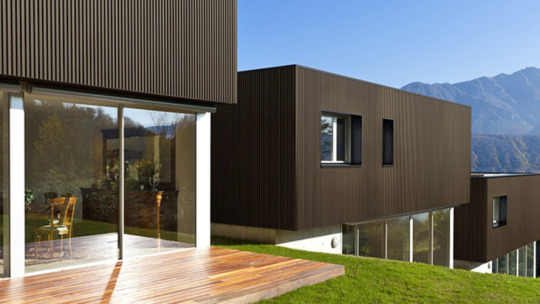
Ventura India is a renowned supplier of high-quality architectural laminates, wood veneers, decorative panels, and wall coverings in Delhi NCR. With an extensive range of products and a commitment to excellence, Ventura India offers innovative solutions for residential, commercial, and hospitality projects.
Whether you're an architect, interior designer, or a homeowner looking to enhance your living space, Ventura India has the perfect materials to meet your requirements. Our product range includes:
Architectural Laminates: Explore our wide collection of laminates in Delhi that offer durability, aesthetics, and versatility. From solid colors to textured finishes, our laminates are designed to elevate any interior or exterior surface.
Wood Veneers: Enhance the natural beauty of your spaces with our premium wood veneers in Delhi NCR. Available in a variety of species, colors, and patterns, our wood veneers add warmth and elegance to furniture, cabinetry, and wall applications.
Decorative Veneers: Transform your interiors with our decorative veneers in Delhi. These exquisite veneers feature unique designs, patterns, and finishes, allowing you to create a personalized and captivating environment.
Wall Panels: Discover our extensive range of wall panels, including planks, 3D panels, leather panels, and fluted wooden panels. These panels offer creative possibilities for accent walls, ceilings, and feature installations.
WPC Cladding: Explore our WPC cladding solutions in Delhi that combine the natural appeal of wood with the durability and low maintenance of composite materials. Ideal for both interior and exterior applications, our WPC cladding provides an elegant and sustainable solution.
Laminates for Wall Covering: Our laminates for wall covering in Delhi offer a versatile and cost-effective solution for transforming plain walls into visually appealing surfaces. Choose from a variety of colors, patterns, and textures to create stunning interiors.
At Ventura India, we are committed to delivering top-notch products and exceptional customer service. Our team of experts is always ready to assist you in selecting the perfect materials for your projects. Visit our website https://www.venturaindia.com/ to explore our product range and experience the best in architectural laminates and decorative panels.
#Planks For Wall In Delhi#Architectural Laminates#Wood Veneers In Delhincr#Wpc Cladding In Delhi#Leather Wall Panels#Decorative Veneers In Delhi#3d Wall Panels#Wooden Panels For Wall In Delhi#Leather Wall Panels In Delhi#Wpc Cladding#Veneers For Wall#Exterior Wood Cladding#Veneer Wall Panels#Fluted Wooden Panels#Fluted Panels#Wooden Cladding#Buy Wall Panels#Laminates In Delhi#Decorative Veneer Sheets#Wooden Cladding For Exterior Walls#Decorative Boards#Wall Laminates#Laminates For Wall#3d Walls Tiles#Laminates For Wall Covering#Charcoal Fluted Panels#Indoor Wall Panels#Laminate Wall Panels#Charcoal Panels#Charcoal Wall Panels
0 notes
Text
Hermione Granger and th Dramione Shippers - Chapter 11
“Positively breathtaking.” said Draco as he kissed her hand when they met outside the gates. His lips lingered on her hand for a long instant before he started kissing his way up her arm gently pulling her closer. Her cloak fell back from her shoulder and he kept kissing up her throat, eventually reaching her lips. Her fingers reached the back of his head as his arms circled her waist. Hermione felt heat course through her body as the intensity of the kiss grew exponentially.
Draco eventually pulled away and the cold crept up on Hermione. He pulled her cloak back to cover her.
“I’m sorry, I got a bit carried away.” He said, not looking sorry at all.
“I’m glad to see you, too. Gomes.” Hermione chuckled.
“Who’s Gomes?” Draco frowned.
“Oh, right. Just a character from a muggle show. I’ll show you sometime.” She took his hand. “What’s the plan?” she asked.
“Edinburgh. I’ve reserved a table at The Witchery.”
He brushed one finger along her jaw and kissed her again. Just a soft kiss on her lips, but Hermione felt the heat spread from her chest all over again. He straightened up and apparated them.
They appeared in a small passage between a gift shop and an ice-cream parlor across the street from the witchery. They walked, hand in hand, the short distance to the restaurant. They were greeted at the entrance by a witch wearing black robes.
“Good evening Miss Granger, Mr Malfoy. Welcome to The Witchery by the Castle. If you’d like to leave your cloaks with me, I’ll escort you to your table.” They handed her their cloaks and she vanished them.
She led them to a small table by large, white, French windows in a wood paneled room with a high painted ceiling depicting images of the tarot. Candles spread a golden glow illuminating the leather chairs, the white tablecloths and the gilded statues scattered around the room. Draco pulled Hermione’s chair out for her and then sat on the opposite side of the table. He was wearing a black three-piece suit with a white shirt and a Gryffindor-red tie and pocket-square.
“We swapped house colors.” Commented Hermione nodding at his tie.
“I must say, Hermione, I think the color green was invented just for you. I might decide to start a quest to conquer the world just to forbid anyone else from wearing green ever again.” He smirked.
“Honestly, I think we’ve had enough world domination attempts to last us several lifetimes. How about we make a deal. You refrain from conquering the world and I wear green more often.”
“I could settle for that. I’m suddenly having visions of you wearing nothing but emeralds.” He eyed her through his lashes as he pretended to read the menu.
Hermione blushed. She was sure she’d read something along those lines in one of the Dramione fan fictions she’d read over the Christmas holidays. Two flutes of champagne appeared on the table. Hermione cleared her throat and tried to read what was written on the menu but her eyes would not focus.
#ao3#archive of our own#draco x hermione#dramione#hermione fanfiction#hermione granger#hp fanfic#draco lucius malfoy#fanfiction#hermione#dramione fanfic#dramione fandom
8 notes
·
View notes
Text
Where to start. Sweep of September air from the door. Blinking cursor. What are you taking this semester? he asks. Sustainable sourcing, fair trade, organic. Java, mocha. Enamel on wood panel, 12 x 12 inches. From Kenya and Sumatra. Welcome to Fox Point. Perhaps the coffee will be just as good as the last time. She looks down at the half-eaten miniature Boston cream donut on the fluted baking paper. French 2. What is Enlightenment. Digital Media in the Time of Ecological Crisis. Regular milk? Regular milk. And Bakhtin and the Political Present. Flyers litter the bulletin board. Where to start. There is a wide range of freshly roasted single origin beans. And the coffee is made in a wide variety of ways. And the interior is warm and eclectic. There is ample seating and there are large windows and there are rounded grooves in the scuffed wall paneling. There are racks of magazines, and frosted glass pendant lamps in yellow and blue. It’s a relaxing atmosphere. Hiss of the steamer. Paper cups with dimpled brown sleeves. Stretched burlap in the window. The steam rises steadily. Where to sit. Waste of time. Write what you know. Listen, the coffee is organic and it taste very good. It is pure and hot and strong. It can always stand alongside friendship. Song from the sixties: refrain, elegy, churchyard, string quartet. Panned hard left and right. Simple, separate people. He writes on Twitter: Does anyone else feel like a ghost? I have had the privilege of trying the finest cafés in Korea, Japan, and all around Asia, but I’d say Coffee Exchange would be the best as far as Lattes are concerned. And honestly this is one of my favorite coffee shops, due to the quality and the variety. Ideal for a date, perfect for studying or working, and superb for simply enjoying your cup of coffee. No one would be disappointed. The hardest part is getting to the starting point, he says. I finished training last week. My first day is Monday. It’s one block of Williams, on the south side. Four more streets below that, between Benefit and Governor—John, Arnold, Transit, and Sheldon. From John to Sheldon it’s Thayer, Brook, Hope, and East, and all those tiny streets in between, names I can’t remember. It might seem impossible to learn your route at first but the jump in your knowledge from the first time to the second will be dramatic. That’s what I’ve generally found to be true for people. Close the laptop. Sakura means cherry blossom, smile, open mouth. The summer was long. I was away for six weeks, she says. Six weeks? I would read in the mornings. I would write long letters. I would wander, disquieted, along the avenues, under the linden trees. 3 bedroom, 1 full bath apartment on the second floor of a mixed-use building on Wickenden Street. Large open kitchen with granite counter top, spacious bedrooms, modern full bath, central air and in-unit laundry. Unruhig. Restlessly? But I have been sleeping well. Or I’ve been sleeping late. As the days get shorter it becomes easier to fall in love with shadows. Stirring in raw sugar, one packet. Oh, such a good book, he says. What did you think? The main thing is that everything happens at the right time. And that is grace. That is providence. The twentieth remove: here was mercy on both hands. Here was the benevolence of friends. Do you see a thousand little Motes and Atomes wand’ring up and down in a Sun-beam? That is preservation, and that is government. And in these providence consists. Such a good book. And when you start reading it, you notice little things about the city. The book club meets once a month, depending on the book. Always in person. And you notice little things, like the way the white cross on the church aligns with the windowpane and is split by shadow as the sun dips below the buildings. A picture held us captive, and we could not get outside of it, for it lay in our language. Where to start. Cross the room and sit by the window. Wer jetzt kein Haus hat, baut sich keines mehr. Wer jetz allein ist, wird es lange bleiben. We are served our coffees, and the steam rises steadily.
Exhibition text for Jesse Sullivan: Coffee Shop, Drama Gallery, Brooklyn, NY
4 notes
·
View notes
Note
PHIOOOOOOO you should tell me about yor littol shadow guy........I think they r silly....and purrhaps my oc Castaway and him share a few characteristics.....
CRAP CRAP I FORGOT TO ANSWER THIS AND I JUST REMEMBERED I AM SO SORRY SHSANDJSJXJ
feelo... first off they use any pronouns! second of all, theyre a very shy type — theyve lived in the woods away from society for very long, until the moomin-crew discovers them
they actually play the flute!! cause im not sure if youve seen the post about my ancient flute alarm but its the only thing that can wake me up, so i decided to include it into his character HAHAHA if castaway plays anything, maybe theyd play together huhu
he doesnt speak much at first (or maybe doesnt speak at all? im unsure), but i have lots of arc ideas for the future if i ever make comics for him!! if you look back at my og post there were a few comic panels showing him lowering the scarf around his neck and her hoodie, with the episode title "Under the Hood" — it signifies a core part of her arc that i have no time to explain JABSHABD
some more fun facts, at some point she sets up shop (well, more like a tiny vendor stall) in the woods where she sells little trinkets and advice for a few cents or a cool rock HAHAHA they store their things in their little bucket for safe keeping and pulls them out when necessary (e.g. they grab a minnow out of it and just start eating it as a snack)
going back to them speaking, if they do end up not speaking, id like to imagine they speak through drawings in a notebook, so its just a game of pictionary whenever theyre around HABSAHHA itd be funny to see people try to piece together what theyre saying as they grow more and more annoyed and the drawings get messier
anyways thats all! id love to hear about your little guy 👀👀 we can ask eachother questions and take turns! (and if you rp... ive been waiting to do a moomins rp for a while huhuhu)
#THANKS SO MUCH VILLE!#always nice to see you in my inbox#even if this is just the second time HAHAHAH#feel o fick!#man i should organise my tags HAHAHA sorry about that#im so excited to meet castaway >:)))
12 notes
·
View notes